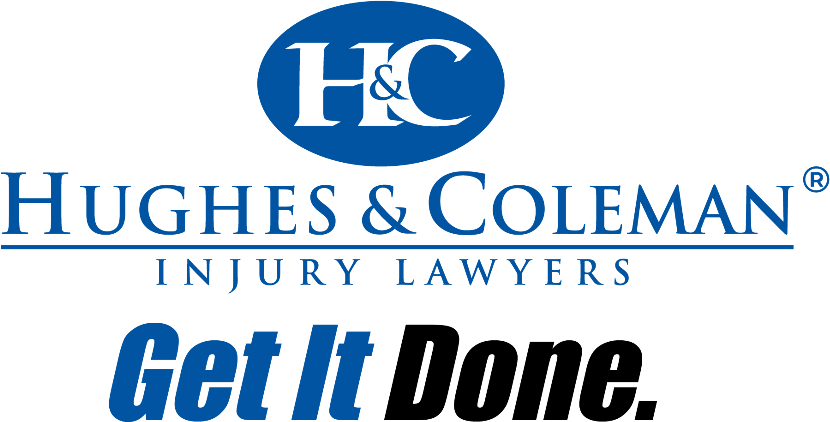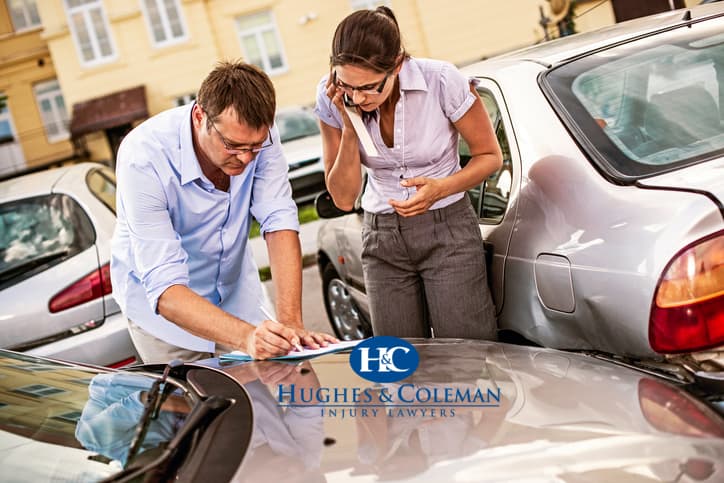-

In this article, we discuss how multiple-car accidents happen and what rules are used to resolve the issues of fault and liability in such accidents in both Tennessee and Kentucky
On December 1st, 2011, Hendersonville, TN – the fourth-largest city in the Nashville metropolitan area – became the scene of one of the biggest multiple car accidents in history. That day, a thick fog settled on Sumner County, reducing visibility to only 5 feet, and low temperatures in the early hours of the morning caused black ice to form on State Highway 386. The first crash, that ultimately led to three more chain reaction events, happened shortly before 7 a.m. When the fog lifted a couple of hours later, it revealed the horrifying aftermath of the pileup. The chain of wrecks stretched on the highway for two miles. The number of vehicles involved amounted to 176, including a school bus, a preschool bus, and a tractor-trailer. 16 people were injured and one person was killed.
Unfortunately, unlike single-vehicle crashes that often result in little damage and minor injuries, multiple-car pileups usually bring about serious or even catastrophic consequences to both property and people. According to the data gathered by Insurance Institute for Highway Safety (IIHS), 59 percent of all car occupant deaths in 2016 occurred in multiple-vehicle crashes. Survivors of such accidents often require extensive and prolonged medical care that may prove extremely costly. In addition, because a great number of different factors involved, accurately resolving the issue of liability in the aftermath of a multiple-car accident can be quite challenging. In this blog, we will discuss the general principles used in determining fault in multi-vehicle pileups. If you are a passenger injured in a multi-vehicle accident, it’s important for you to understand your options as well.
What is a Multi-vehicle Pileup?
Multi-vehicle pileups are defined as road accidents that involve three or more cars. The circumstances leading to such accidents can vary. Often, difficult weather conditions and other outside factors play some role. A pileup can occur as a result of a single driver’s negligence or can be caused by carelessness on the part of many drivers. In any case, one collision event usually leads to a chain reaction with a quickly growing number of cars involved in the crash, such as on a Tennessee interstate.
A typical scenario of a pileup may look as follows: driver A breaks suddenly. Driver B, who is driving right behind driver A, is unable to reduce speed quickly enough to avoid a collision. The two cars collide and come to a violent stop. Driver C, who was driving behind at some distance, slams the brakes of their car but the vehicle, instead of stopping, starts skidding uncontrollably and crashes into the driver’s B car. If the conditions on the road are challenging – for example, the visibility is reduced by a fog – or if the accident occurs in a dangerous spot – for example, right after a curve – more and more vehicles can quickly become involved in the pileup.
Who’s at fault when more than one car is involved in a crash?
In the scenario described above, it would be easy to assume that the driver who caused the initial collision – driver A – should bear the financial liability for the damage and injuries sustained by other drivers. However, the reality of a multiple-car pileup is rarely that simple. In most cases, more than one driver bears a degree of fault and responsibility for the crash. For example, driver B might have been speeding, or following too closely, and driver C might have neglected to change the tires on his or her car. If that was the case, then all the drivers could be found liable to some degree in this chain reaction accident.
Of course, in order to discover the circumstances leading to a multiple-vehicle pileup, and to untangle the question of liability, a thorough investigation by the police must often be conducted. Such investigation can take weeks or even months. The police will usually employ experts to reconstruct the accident by analyzing the damage to the cars, skid marks at the place of the crash, testimonies of the witnesses, recordings from CCTV cameras, and other available evidence.
Who’s Liable?
Let’s assume that it has been determined that three drivers share some degree of fault in a multiple-car pileup involving 5 vehicles. Which driver will bear the financial responsibility for the losses sustained by other drivers? Can a driver that has been found to have a degree of fault in the pileup be awarded damages for his loses as well?
Different states solve such legal issues in different ways, according to the following three main approaches to fault and liability:
- Pure contributory negligence – means that a party that shares a degree of fault in the accident – even as small as 1% – cannot recover any damages
- Pure comparative fault – a party can recover some damages even if it’s 99% at fault; the value of the damages will be reduced by the party’s degree of fault
- Modified comparative fault – a party can recover some damages but only if the degree of fault they share in the accident is:
-
- 49% at fault or less (50% bar rule)
- 50% at fault or less (51% bar rule)
The amount of compensation that can be recovered by a person in states who follow the pure or modified comparative fault theory will be reduced by the degree of fault they share in an accident.
Pure comparative fault is practiced in Kentucky while Tennessee adopted the modified comparative fault model with the 50% bar rule. In practical terms, this means that a driver in Kentucky who shares 60% of fault in an accident can be awarded money in damages for the injuries and property damage but he or she will only receive 40% of the amount awarded. A driver involved in a multiple-car accident in Tennessee will only receive money if the degree of fault they share in the crash is less than 50% and the recovery will be reduced by his or her degree of fault.
Determining fault and recovering financial compensation for injuries sustained in a multi-vehicle pileup it’s often a lengthy and complicated process. If you or a family member have recently been involved in a multiple-vehicle accident, it may be in your best interest to seek professional legal advice. Our quick reference guide will help you decide if you need to hire an experienced car accident lawyer to handle your claim related to a multi-vehicle pileup.
Get In Touch Today!
We offer free consultations 24/7 and there will always be someone here to take your call. Call our personal injury lawyers today for a free consultation or fill out this form and we will contact you.
We serve clients across Tennessee and Kentucky and we have several offices throughout both states. See all of our locations and contact us today.


